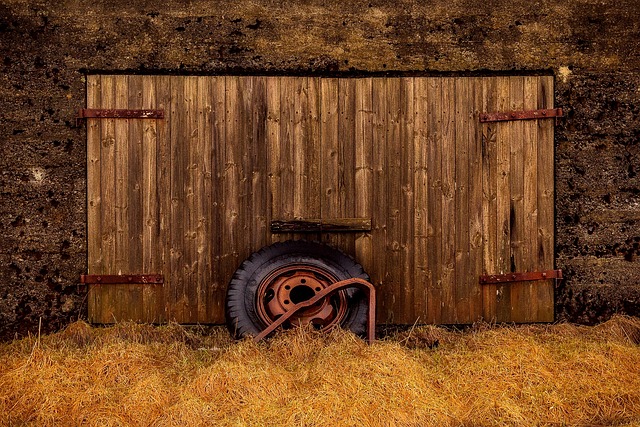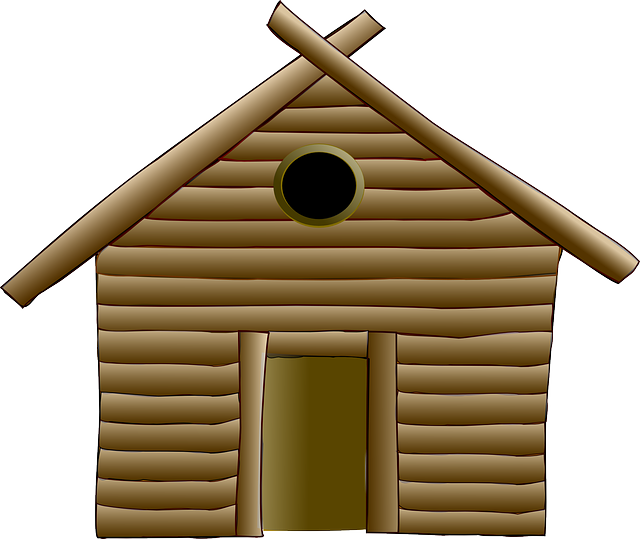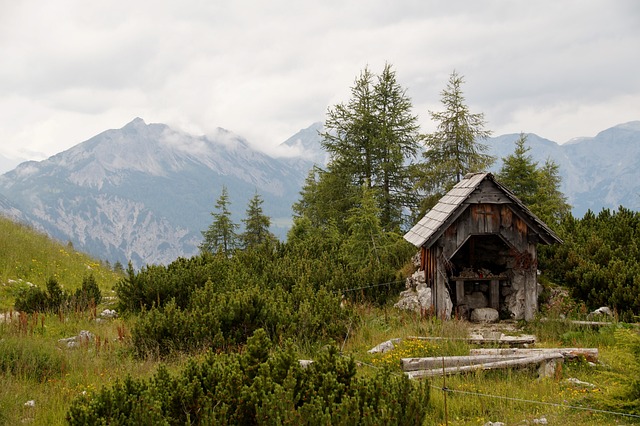Farm sheds in Wagga Wagga, New South Wales, are transforming agricultural efficiency with their multifunctional design, serving as storage for livestock, machinery, and fodder, while also offering space for equipment maintenance. These structures are specifically designed to withstand the local climate, providing protection against environmental elements and ensuring optimal natural ventilation, which conserves resources and enhances productivity and sustainability within farming operations. The strategic layout and robust construction of these sheds facilitate better management of livestock and crops, optimizing workflow patterns for farmers. Features like durable materials, roller doors, and ample lighting make maintenance tasks more manageable, leading to cost savings and efficient planning year-round. The integration of sustainable practices and advanced technologies in farm shed design has significantly improved animal welfare by offering natural lighting, ventilation systems, and robust construction with materials like Colorbond steel. These modern sheds incorporate features such as automated feeding systems, climate control, and biosecurity measures, all tailored to various livestock types for optimal health and comfort. This evolution in farm shed design reflects Wagga Wagga’s commitment to progressive farming practices, sustainable materials, and environmental stewardship, positioning the region as a leader in innovative, green agricultural infrastructure. The shift towards these modern farm sheds represents both a response to the unique challenges of the local climate and a step towards economic and ecological sustainability within the agricultural sector.
exploration of farm shed dynamics within Wagga NSW’s agricultural sector reveals pivotal roles in optimizing efficiency and animal welfare. This article delves into the critical aspects of livestock shed design and construction, highlighting innovative sustainable solutions for modern farming practices. Through a detailed examination of durable and functional farm sheds, we provide insights on enhancing rural operations and ensuring high standards of animal care in this thriving region. The future of farming in Wagga NSW is set to be shaped by cutting-edge materials and technologies that promise to elevate the industry’s sustainability and profitability.
- Optimizing Agricultural Efficiency: The Role of Farm Sheds in Wagga NSW
- Design Considerations for Durable and Functional Livestock Sheds in the Region
- Innovative Farm Shed Solutions for Enhanced Animal Welfare in Wagga NSW
- The Future of Farming: Sustainable Materials and Technologies in Livestock Shed Construction
Optimizing Agricultural Efficiency: The Role of Farm Sheds in Wagga NSW

In Wagga Wagga, New South Wales, farm sheds are more than mere storage structures; they are integral components of optimizing agricultural efficiency. These sheds serve a multitude of purposes, from sheltering livestock and machinery to providing space for fodder storage and equipment maintenance. The region’s farm sheds are designed with local climate considerations, ensuring they protect against harsh sun and rain while promoting natural ventilation. This design optimizes the use of available space and resources, directly enhancing the productivity and sustainability of farming operations.
The strategic placement and construction of farm sheds in Wagga Wagga contribute significantly to streamlining agricultural activities. By facilitating efficient workflow patterns, these structures enable farmers to manage livestock and crops more effectively. Additionally, the use of durable materials and smart design elements, such as roller doors and ample lighting, make maintenance tasks less labor-intensive and time-consuming. This efficiency not only improves the bottom line but also allows for better planning and management of farm activities throughout the year. As a result, farm sheds in Wagga Wagga are pivotal in maintaining the competitiveness and resilience of the local agricultural sector.
Design Considerations for Durable and Functional Livestock Sheds in the Region

In the agricultural heartland of Wagga Wagga, New South Wales, designing farm sheds that withstand the region’s diverse climate and cater to the specific needs of livestock is paramount. These structures serve as more than mere shelters; they are integral to the productivity and well-being of animals under their roofs. To ensure durability and functionality, local farm shed designs must account for several factors. Firstly, materials chosen should be robust and resilient to withstand extreme weather conditions, ranging from scorching summers to unpredictable rainfall. Materials such as Colorbond steel are favored for their longevity, low maintenance requirements, and aesthetic appeal. Additionally, the design should facilitate natural light and ventilation to maintain a comfortable environment for livestock, reducing reliance on artificial lighting and heating during colder periods.
Furthermore, the layout of these farm sheds must be thoughtfully planned to accommodate different types of livestock, with considerations for animal flow, feeding stations, and segregation areas if necessary. Cattle, sheep, and other animals have distinct needs in terms of space and shelter, and these should be reflected in the design. Accessibility for both humans and animals is also crucial; wide aisles allow for easy movement, while loading ramps and chute spaces must be designed for efficient stock handling. Incorporating features such as ample water points, feed troughs, and waste management systems from the outset can significantly enhance the functionality of these sheds and reduce the need for costly renovations down the line.
Innovative Farm Shed Solutions for Enhanced Animal Welfare in Wagga NSW

In recent years, the region of Wagga Wagga in New South Wales has seen a surge in the adoption of innovative farm shed solutions aimed at enhancing animal welfare. These modern farm sheds are not just structures for shelter; they are designed with the animal’s well-being as a priority, incorporating natural lighting and ventilation systems to create a more humane and healthier environment. The use of advanced materials has led to stronger, more durable sheds that can withstand harsh weather conditions, ensuring the safety and comfort of livestock all year round. Additionally, these state-of-the-art farm sheds often come equipped with features like automated feeding systems and temperature control, which contribute to reduced stress in animals and more efficient farm management for local farmers in Wagga NSW.
The integration of technology in farm shed design has been a game-changer for the region’s farming practices. These new farm sheds are engineered with the latest in thermal efficiency, biosecurity measures, and ergonomic design to accommodate the specific needs of different types of livestock. The result is a significant improvement in animal welfare outcomes, as well as operational efficiencies for farmers. With a focus on sustainability and eco-friendliness, these innovative farm shed solutions not only benefit the animals but also contribute to the environmental health of Wagga NSW’s agricultural landscape, making them a sound investment for the future of farming in the region.
The Future of Farming: Sustainable Materials and Technologies in Livestock Shed Construction

In the evolving landscape of agriculture in Wagga Wagga, New South Wales, the integration of sustainable materials and advanced technologies into farm shed construction is shaping the future of farming. Innovative approaches to building these structures are not just about maintaining livestock; they represent a commitment to environmental stewardship and economic viability. Modern farm sheds leverage materials such as recycled steel, composites that reduce reliance on finite resources, and energy-efficient designs that minimize waste and energy consumption. These eco-conscious choices align with the broader goals of sustainable agriculture, ensuring that the industry’s environmental footprint is minimized while providing safe, humane living conditions for livestock. Additionally, the adoption of smart technologies, including automated climate control systems and solar panel integrations, not only enhances animal welfare but also positions farmers to capitalize on renewable energy incentives. As such, the future of farming in Wagga Wagga is poised to be one where farm sheds are not merely structures for housing animals but are integral components of a sustainable and technologically advanced agricultural system.
Farmers in Wagga Wagga are increasingly exploring green construction practices, which include using materials with lower environmental impacts and harnessing renewable energy sources. These initiatives not only contribute to the conservation of natural resources but also offer economic benefits through reduced operational costs and potential revenue streams from energy surpluses. The transition towards sustainable farm sheds is a testament to the region’s adaptability and forward-thinking attitude, ensuring that Wagga Wagga remains at the forefront of modern farming practices. With a focus on durability, efficiency, and environmental responsibility, the future of farm shed construction in this area is set to be a benchmark for sustainable agriculture across Australia.
In conclusion, farm sheds serve as the backbone of agricultural operations in Wagga NSW, significantly enhancing the efficiency and sustainability of livestock farming. The careful design and implementation of these structures are pivotal to their durability and functionality, ensuring they meet the specific needs of the region’s diverse rural environment. As we look to the future, the integration of innovative materials and advanced technologies in livestock shed construction promises to further elevate animal welfare while promoting sustainable practices. It is through such forward-thinking approaches that Wagga NSW can continue to be a leader in the evolution of modern farming, ensuring the industry’s resilience and success for generations to come. Farm sheds are more than just structures; they are the foundation upon which the vitality of rural communities and the health of livestock depend.
